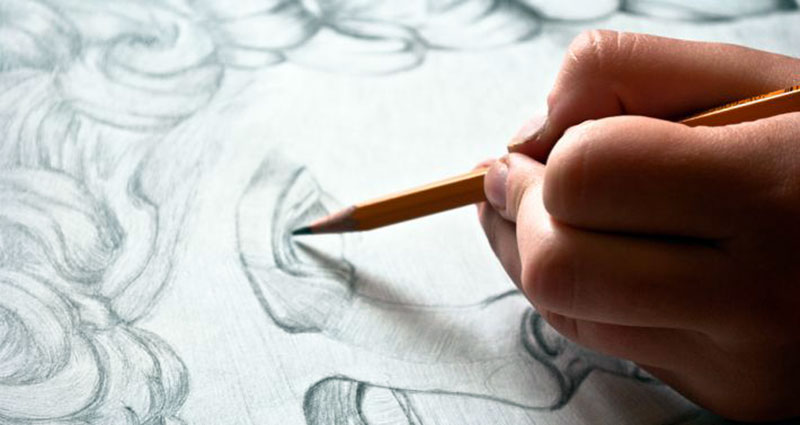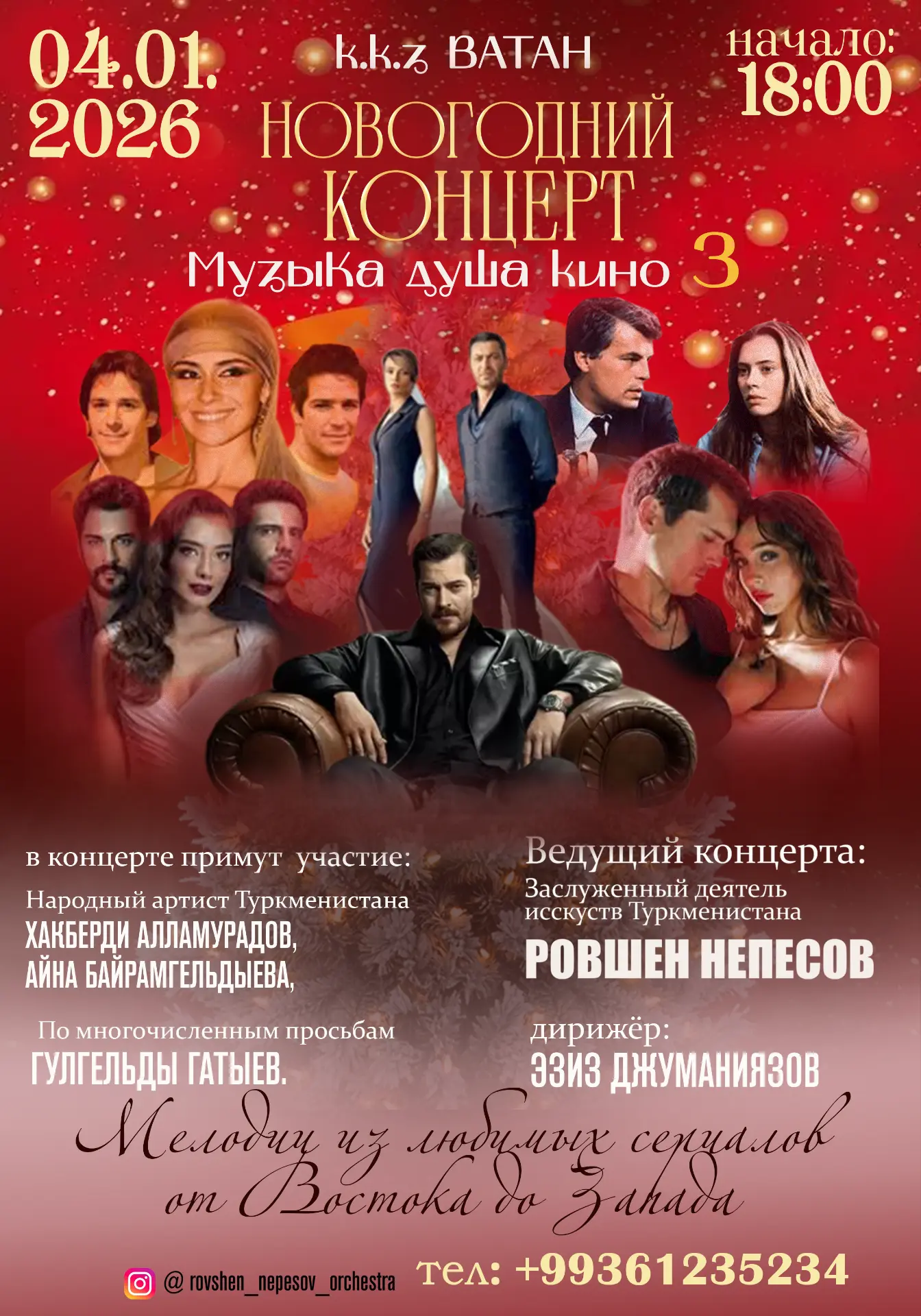Today it is difficult to imagine that once, having opened a newspaper, one cannot find photo illustrations on its pages, we are so accustomed to the fact that photographs certainly accompany almost all newspaper materials - essays, sketches, reports, interviews. Progress in the printing industry blossomed printed materials, once making black-and-white color printing, and, in general, the time when pictures in the newspaper were rare and their role was played by drawings made by artists who were part of the staff of any newspaper or magazine ... And just like today's photographs, often these drawings, having fulfilled their function, did not go into the past with the newspaper, but began to live a separate life. Others became true works of art.
The beginning of the 20s of the last century was a time of rapid development of the Turkmen art - musical, dramatic, visual. It was in those legendary years that names began to appear that later glorified the Turkmen theater, national painting, and operatic art. It was then that the famous Outstanding School of the Arts of the East was created. In those unforgettable years of general enthusiasm and creative upsurge, many talented illustrators worked in the emerging publishing houses of Turkmenistan, who left their mark on the cultural life of the country. I want to tell you about one of them, about Nikolai Petrovich Shchapov.
Nikolai Petrovich Shchapov was born in 1896 in Chelyabinsk. After graduating from high school and attracted by a passion for painting, which awakened in his childhood, he came to Moscow to enter the art school, the famous "stroganovka". It did not take long to study - the First World War began, and the painting student had to change his brush to a rifle. Ironically, he fought for the Whites, then for the Reds, then participated in the Civil War and even managed to graduate from a college, though not an art one, but a military one. But even after becoming an officer, he remained, first of all, a man of brush and paints. After demobilization in 1923, Nikolai Petrovich worked as an artist in the drama theater of the city of Semipalatinsk, then as an illustrator in the editorial office of the Tashkent newspaper Pravda Vostoka, and then his life began to actively bring him closer to Turkmenistan. In the same 1923, at the invitation of the united publishing house of the editorial offices of the newspapers " Sovet Turkmenistany», (now "Turkmenistan") and "Turkmenskaya Iskra" (now "Neutral Turkmenistan"), Nikolai Petrovich Shchapov arrived in Ashgabat.
By that time, the newspaper "Sovet Turkmenistany", where Shchapov was appointed head of the illustrations department, had existed for three years, and "Turkmenskaya Iskra" was just getting ready to publish its first issues. Nikolai Petrovich began to work simultaneously in two publications, and in the "Turkmenskaya Iskra" from the very first issue.
Here, in Turkmenistan, Nikolai Petrovich Shchapov's talent as a graphic artist was fully revealed. His drawings appeared in print media almost daily. Nikolai Petrovich brought whole albums with illustrations from his trips around the country. He did not have any special topic that Shchapov preferred. Nikolai Petrovich was interested in everything that surrounded him. Every day, discovering a new country for himself, the artist was amazed at the diversity of her life and tried to transfer to paper everything that attracted attention - people, nature, wildlife, especially Akhal-Teke horses, whose beauty he never ceased to admire. Here are just some of the titles of his works: "Twilight", "Rainy Day", "Boy Leading with a camel", "Ruins of the old fortress", “Kone-Gala (Keshi)", "The Sea on a quiet day", "The old Man at the ditch", "Mosque in Anau" ...
Shchapov's drawings were distinguished by their clarity and precision of composition, simplicity and laconic expression. Even now, many years later, they are eye-catching. Perhaps because they were filled with magnetism of the most mysterious combination of black and white colors, bringing freshness to the drawing and giving it expressiveness and volume.
A realist artist, Nikolai Petrovich had a remarkable ability to sharply grasp the national characteristics of the image. Namely national images that cannot be confused with any other.
“There are no uninteresting people,” Shchapov believed, “each living person is unique, everyone has their own world, their own hobbies, likes and dislikes, passions and prudence, love and hate, that is, all those qualities of character that over time, like a seal reflected on the faces. " It was this human individuality that he tried to find and capture.
Here is the face of an old Turkman transferred to paper with filigree precision, here is a beautiful young woman busy with needlework, and this is an old woman with a sweet, kind, wrinkled face like a baked apple, spinning a spindle, here are the streets of Ashgabat, city builders, Turkmen potters ... You can't list everything at once.
Artist, illustrator, draftsman, Nikolai Petrovich created a large number of realistic drawings for the magazine "Turkmenovedenie", in which he captured images of the Turkmen, original in terms of expressiveness. These are sketches, landscapes, portraits of men and women, where the artist showed himself to be an observant writer of Turkmen life. The characteristic details of the national dress, gestures, facial expressions and features of the Turkmen dwelling, nature, are vividly noted, conveyed by the virtuoso technique of the stroke
His work attracted the attention of specialists. Some of the drawings by Nikolai Petrovich Shchapov were at one time presented in the exposition of the Department of the Soviet East at the State Museum of Fine Arts in Moscow.
And again, a war entered his life - first with the Finns (Nikolai Petrovich did not like to remember this war), then the Great Patriotic War.
Again, the nearly fifty-year-old artist put his pen aside and took up arms. He walked along many roads of the war - as part of the First Belorussian Front, he liberated Warsaw, took Berlin.
Shchapov returned home, to Ashgabat, with military awards, but what is surprising: subsequently, not a single front-line sketch was found in his archive. During the war, he willingly painted portraits of his comrades, who sent them to their relatives and friends instead of photographs, but he did not bring a single piece of paper with him.
Or maybe they weren't there at all? Perhaps the memories of the most cruel, bloodiest battle in the history of mankind, the death of front-line friends, are so engraved in the memory of an already middle-aged artist that there was no need to transfer them to paper so as not to disturb the bleeding wound once again? Aniway, Nikolai Petrovich never touched on the military theme.
He worked every day. After the war, as, indeed, before it, in the editorial offices of newspapers, cameras began to be used with might and main and, it would seem, the art of a newspaper illustrator should become a thing of the past, but no, the drawings of Nikolai Petrovich Shchapov continued to appear on the pages of newspapers and magazines, until 1969 ... He still enthusiastically transferred to paper everything that touched him - the faces of the people he met, streets, houses, sky, sea, Akhal-Teke people ... He was jokingly called the “everyday life” painter of the land. However, it was so.
I look at the graphics of Nikolai Petrovich Shchapov and again think about the attractive power of his drawings. And the feeling becomes clearer that they are not simply woven from an inexplicable, soul-stirring combination of only two colors - black and white, they are filled with the magic of the warmth of a hand holding a pen. Warmth coming from the heart. You can draw this way only when you love what you see.
One of the last works of Nikolai Petrovich is called "An old man walking along the road of the Firyuzinsky gorge." A tape of asphalt winds between high rocky ledges. A lonely, tired traveler walks along the road, moving deeper into the gorge. The old man is wearing a don robe, telpek, leather ichigi - one of the many old people met by the author over the long years of work. But it seems that it is the artist himself who is walking along the winding road of life, which, in the end, led him to the land, where he found his berth.
For almost half a century, Nikolai Petrovich lived in Turkmenistan, which became his second homeland. Shchapov's creative heritage is extensive: the Central State Archives of Turkmenistan contain about a thousand graphic works of the talented draftsman, about which Nikolai Petrovich's friend, artist, senior researcher at the State Museum of Fine Arts of Turkmenistan Pavel Vasilyevich Popov said: “The graphic works of Nikolai Petrovich Shchapov are undoubtedly of interest to history of the Turkmen newspaper graphics". And not only newspaper. All his talent as a realist graphic artist, all his love and gratitude to the land on which Nikolai Petrovich Shchapov lived and worked was invested in these works.








